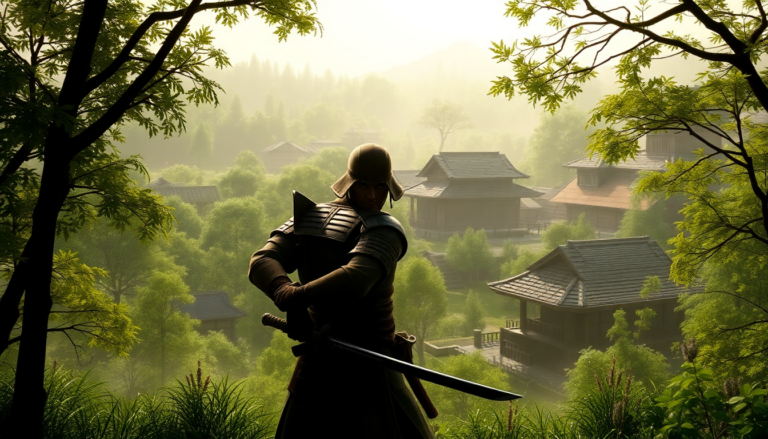Argomenti trattati
The legendary Onimusha 2: Samurai’s Destiny has risen again, resurrected with a remaster that invites both veterans and newcomers to experience its captivating blend of action and adventure. Originally launched over twenty years ago, this classic has not only stood the test of time but is now enhanced for a new generation. With a storyline steeped in Japanese history and supernatural elements, players step into the shoes of Jubei, a warrior on a quest to avenge his village against a resurrected warlord. But does this remaster breathe new life into an iconic title, or does it risk being overshadowed by modern gaming standards?
The story unfolds in a ravaged land
Upon returning to his home village of Yagyu, Jubei is met with devastation. The once vibrant community is now a ghost town, overrun by demonic swordsmen and the undead. Driven by a desire for vengeance and guided by a mysterious voice, he discovers his unique ability to absorb demonic souls. This newfound power sets him on a path to collect five sacred orbs, each guarded by a formidable daimyo intent on conquering Japan. With the help of unexpected allies and a sprinkle of magic, Jubei’s journey is both perilous and filled with surprises.
Despite elements of clunky writing and subpar voice acting, the narrative of Onimusha 2 remains engaging. Each chapter of the game allows Jubei to navigate diverse landscapes, vanquishing hordes of demons while solving intricate puzzles. The introduction of various characters enriches the storytelling, encouraging players to form bonds by offering gifts that can influence the story’s outcome. This mechanic not only enhances the narrative depth but also boosts replayability, prompting players to explore different relationships and story arcs with each playthrough.
A colorful cast of characters
Onimusha 2’s supporting characters are a delightful mix of classic tropes, reminiscent of the cult films of the late ’80s and early ’90s. Jubei encounters a variety of enemies that range from laughably goofy to genuinely threatening. The main antagonists, while often comedic in nature, provide a sense of charm that complements the game’s tone. Think of them as a mashup of classic villains and quirky sidekicks, each with their quirks and personalities that add to the overall enjoyment.
The game’s design encourages players to engage with these characters, as they offer unique challenges and insights. Defeating a major foe typically rewards players with one of the coveted sacred orbs, unlocking new abilities and paths to explore. This cyclical nature of challenge and reward keeps the gameplay fresh, as players are constantly driven to improve their skills and strategies in combat.
Combat mechanics and gameplay enhancements
From a gameplay perspective, Onimusha 2: Samurai’s Destiny maintains a classic third-person style reminiscent of the early Resident Evil games. However, it leans heavily into melee combat, emphasizing timing and counterattacks. The remaster has refined the controls, making them feel more responsive and fluid compared to its predecessor, Onimusha: Warlords. Players must master the art of blocking, parrying, and executing counterstrikes to prevail against enemies.
Early encounters might feel daunting, especially when transitioning from a hack-and-slash approach to a more strategic fighting style. New players should be mindful of their health management; relying solely on brute force can lead to dire consequences. The remaster introduces features like weapon swapping on the fly, autosaving, and the ability to skip cutscenes, significantly improving the overall user experience. Additionally, the inclusion of varied difficulty settings caters to both casual gamers and hardcore enthusiasts seeking a serious challenge.
Visual and audio updates
The remaster of Onimusha 2 is visually stunning, showcasing sharp models, vibrant colors, and an updated aspect ratio that enhances the gameplay experience. The aesthetic updates breathe life into the game world, making it feel fresh while still retaining the original charm. However, the voice acting leaves much to be desired, often evoking laughter rather than the intended seriousness. Yet, this kitschy quality adds to the nostalgic appeal and evokes a sense of the era it was first released.
Ultimately, Onimusha 2: Samurai’s Destiny serves as both a tribute to its original legacy and a testament to modern gaming advancements. The remaster successfully blends classic gameplay with contemporary enhancements, ensuring that players can enjoy a well-rounded experience. The game’s vibrant visuals, engaging mechanics, and memorable characters create an adventure worth embarking on, whether you’re revisiting a childhood favorite or discovering it for the first time.
This remaster has won over many gamers, myself included, and I’m eager to see how the franchise evolves in the future. With its engaging gameplay and rich storytelling, Onimusha 2 continues to prove why it remains a beloved classic in the gaming community.

